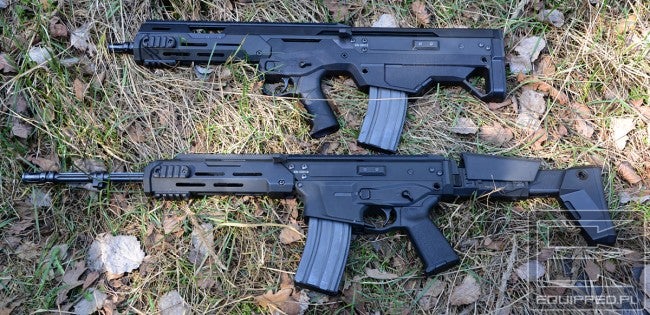Have you ever taken a moment to look at the modern rifle landscape? Let’s start with the APC223 since it’s the subject of the video.

Small arms, particularly service carbines in the 21st Century, have seemed to settle on a consensus of form. With few exceptions, it goes something like this
- Short stroke gas piston, adjustable
- Free floating barrel
- Folding and adjustable stock
- Ambidextrous control suite
These four cornerstones are then accompanied by the individual designers blend of steel, aluminum, and polymer give the rifle form.

FN’s Special Operation Forces Combat Assault Rifle was one of the earlier examples of these features taking form. It was also the high days of the ‘Modularity‘ craze where, no matter how actually impractical, every feature had to be swappable ‘in the field‘ or it was bad.. or something like that.
FN gave us two well built, extremely reliable, lightweight rifles that transferred that weight to their price tags. But as many point out, the SCAR 16 is just a top tier 5.56 carbine for the most top tier of price tags. It didn’t do much the M4 didn’t, it was more reliable and accurate, but in a sort of 23 miles per gallon instead of 21-22 miles per gallon sort of way.
It was that very reason that SCAR 16s stopped being procured into US SOCOM inventory and all the budget shifted to 17’s instead. The 17 did things they didn’t have a rifle for already. But the formula was set.

The ACR (Adaptive Combat Rifle), which played off the name of the 1986 Government program to replace or update the M16 (they do that a lot), was the Remington procurement of a Magpul prototype for a rifle that met a bunch of the SCAR programs goals and kept a lot of commonality with the AR-15.
Remington then spent the following decade thoroughly killing design through every possible failure they could conceivably come up with. It was a rifle that should have worked. They just never put the effort into it. And now its dead, Remington/Bushmaster have pulled all their copy and killed the line.
It does live on though, sort of, and in the hands of a company that cares about making a good rifle. Radom in Poland. I don’t know if there are actually IP transfers involved with this rifle but…

It certainly looks that way.
Although in fairness that is the point of this article. How these rifles are all the same formula.



- Short stroke gas piston, adjustable
- Free floating barrel
- Folding and adjustable stock (available even if not pictured)
- Ambidextrous control suite
The core operating and feature system set of every one of these “new” rifles can be traced nominally back to…

Eugene Stoner, Arthur Miller, and company. Eugene didn’t actually work on the 18/180, he did the AR-16 which was the 7.62 variant, like the AR-10 to the AR-15.
What the old AR-18 is ‘suffering’ from, for lack of a better turn of phrase, is the future developments in CAD, CNC, and rapid prototyping that allow highly effective variations on a theme to be very quickly produced. Even the modern AR-15 variants like the 416 and the MARS, the most recent adoptees by 1st World militaries utilize the advancements. Those don’t have folding stocks though, and cannot with their recoil system design. They could LAW Folder but they aren’t functional folded so I do not include them in the list today.
Negative space attachment rail systems are quickly becoming the fifth element and will be by the end of the decade, most likely.
America loves some M-LOK (thanks to CRANE) while Europe is mixed but strong in the HKeyMod court. Mostly because H&K makes many of the gun: (France, UK, Germany) while the independants like Radom and CZ use M-LOK. But Picatinny rail will not be gone tomorrow, it will be interesting to see if procurement of ancillaries forces a shift away from legacy rails into another product improvement program to add M-LOK to M4’s and M27’s.
A mountain of empirical evidence seems to suggest the best rifle systems for durability, versatility, and accuracy overall are adjustable short stroke piston guns. There are a couple high quality hold outs for full stroke pistons and the DI system isn’t going to stop working or vanish though, we live in an era of very good designs.



